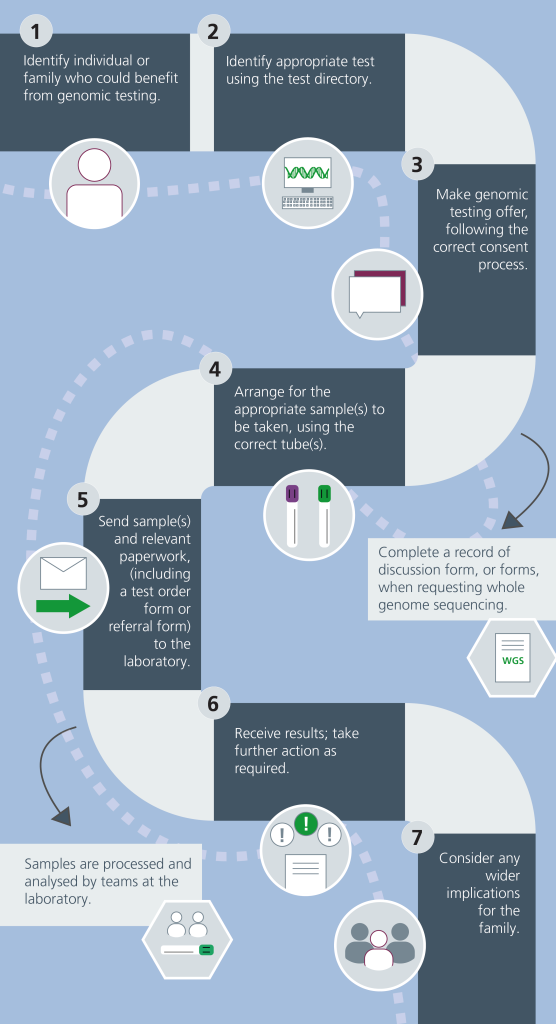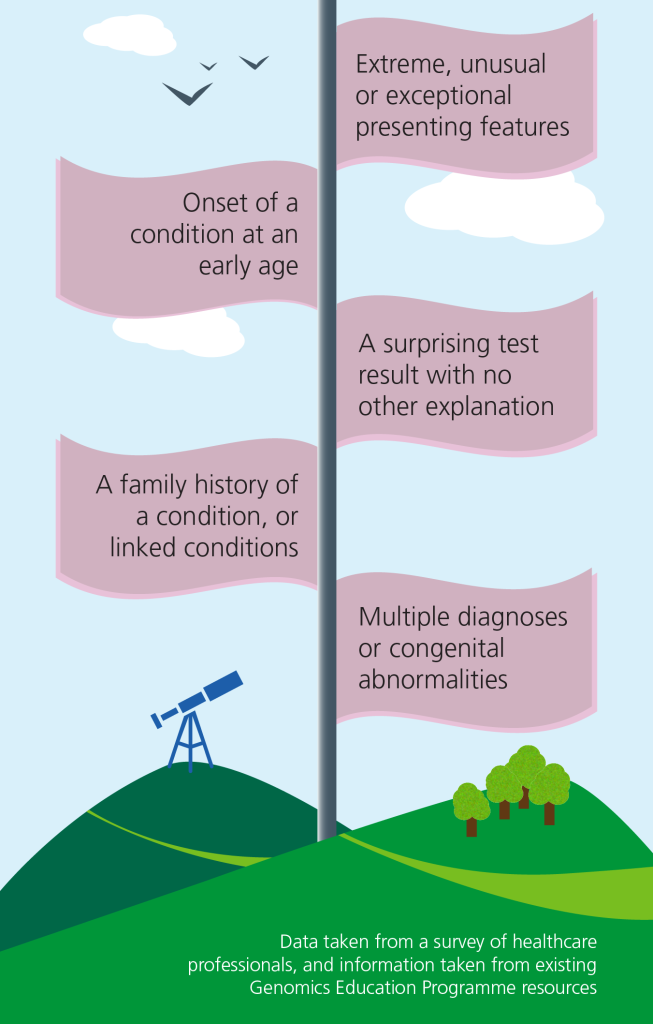Genomic testing pathway in rare disease
The genomic testing pathway for the investigation of rare disease and the feedback of results travels ‘from bedside to bench to bedside’.
Overview
There are seven main steps along the pathway for genomic testing in rare disease, starting with identifying an individual or family who would benefit from testing, working through the process for ordering a test and then feeding back the results.
Summary of the pathway

Figure 1: The genomic testing pathway for rare disease.
(View larger size)
Figure 1 provides an overview of the pathway, including the key touchpoints you will encounter during the genomic testing process.
- Identify individual or family who would benefit from genomic testing. Consider the flags for a possible underlying genomic diagnosis shown below (figure 2).
- Identify the appropriate test using the National Genomic Test Directory. More information about the test directory can be found in this article.
- Begin the testing process with the individual or family, including making the genomic testing offer and working through the consent process. Different record of discussion forms are currently available for whole genome sequencing (WGS) and non-WGS testing.
- Take appropriate sample(s), using the correct tube or tubes. Most commonly, a single blood sample in an EDTA tube will be required, but there are exceptions depending on the test.
- Send the sample(s) to the laboratory with the correct paperwork, fully completed with all required details. Paperwork should include a referral form (for non-WGS tests) or a test order form (TOF) (for WGS tests). Referral forms are available through your local Genomic Medicine Service Alliance, and the WGS TOF is available on this NHS England webpage. Remember to keep copies of all relevant forms in the case notes.
- Receive results and take further action as required. Some results may be clinically actionable; others may require a multidisciplinary team meeting or further investigations.
- Consider wider effects of testing on the family, including cascade screening and reproductive implications.

Figure 2: Five common indications for considering genomic testing.
(View larger size)
Key messages
- The rare disease patient pathway has multiple steps and involves many different health professionals.
- Support and guidance at each stage of the pathway can be found by following the embedded links throughout this article.
Resources
For clinicians
- NHS England Genomics Education Programme (GEP): Genomics in the NHS: A Clinician’s Guide to Genomic Testing in Rare Disease